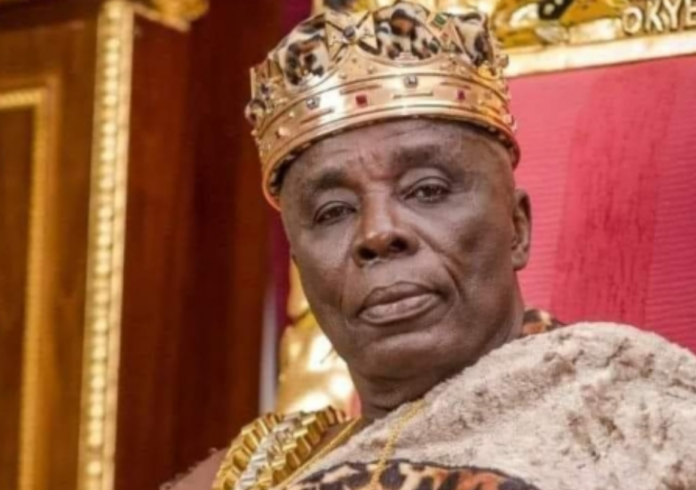There is tension and uneasy calm at Asamankese and Anum in the Eastern Region following the recent elevation of the Asamankese-Anum Chief by Okyenhene, Osagyefo Amoatia Ofori Panin.
The elevation of Barima Essah Kwesi Mensah, a settler chief to the status of Osabarima, equivalent to Asamankese Chief, Osabarima Adu Darko III, has sparked controversy and concern within the community.
Residents perceive this move as an attempt to undermine the authority of the Asamankese Chief.
They accuse the Okyenhene of acting unilaterally to satisfy personal whims without considering the potential long-term conflict and tension among the local populace.
The indigenes have therefore called on the traditional leaders not to sit idle on the matter or history will judge them harshly.
“What is the legitimacy of Osagyefo’s decision? What meritorious service has Anumhene rendered to be elevated”?
The Okyenhene justified the decision by stating it would facilitate better development within their jurisdictions.
However, many in Asamankese, especially elders and opinion leaders from the Anum clan, have questioned the rationale behind this decision.
An anonymous opinion leader from the Anum palace expressed strong opposition, citing historical and traditional contexts.
“We the Anum people are settlers from Akwamu in Asuogyaman who were given a place by the then Chief of Asamankese, Osabarima Kwaku Amoah I, to settle. It is traditionally unprecedented to elevate any chief to the same rank as the Asamankesehene”.
“We are here on the generosity of the Asamankesehene” he added.

“The Anum stool is the only stool in Okyeman without even a single village under it. Our Chief doesn’t have any soft stool under him. He doesn’t even have a cemetery. Anum is a suburb of Asamankese. Asamankese is the biggest town in Okyeman with unmatched land size, possessing stool land, and signs its indenture.”
“How is it possible that as settlers, as tenants, we could be raised to the status of our landlord”? he quizzed.
He added, “Asamankese people are not Akyem. Akyem people came to meet the people of Asamankese, who are Akwamus. However, due to war and other issues, Asamankese came under Okyeman. Anum people are settlers. The stool there was created by Asamankesehene.”
History/background
There has been a precedent of such controversy between the people of Anum and Asamankese over the elevation of the Odikro of Anum to the rank of Asamankese Chief.
A local government bulletin cited by our reporter confirms how on 19th May 1961, an Appeal Commissioner, S.K Banson in his ruling disallowed a planned elevation of the Asamankese-Anum Odikro to the same status as the Asamankesehene.
The Appeal Commissioner ruled that it was contrary to the customs of Akyem Abuakwa that an Odikro residing in the town of a Chief should be elevated to the same rank as the Chief.
“Any such elevation amounts to a wrong exercise of the prerogative the elevation of a chief that in our view, is responsible for the direct misunderstanding and trouble that now exist between the people of Asamankese and the Anums who settled on the land of the Ohene (Chief) of Asamankese.”
The modern city of Asamankese was founded by the Akwamu people. They moved from Dormaa around the 14th century, eventually settling in the Twifo-Heman forest in the late 16th century. This move was driven by the desire for better trade opportunities. The Akwamus are part of the Akan people and belong to the Aduana family, which is related to the Asumennya, Dormaa, and Kumawu families.
Oral tradition says that a succession dispute led Otomfuo Asare, a brass smith, to leave his family and form a new state called Asaremankesee (Asare’s big state), now known as Asamankese. Other settlers from Juaben in Ashanti also came to Asamankese.
Due to this history, Akyem Abuakwa paramount chiefs are believed to have mostly felt uncomfortable with Asamankese’s traditional superiority and have allegedly made attempts to gradually undermine it.
The elevation of the Asamankese-Anum Chief to the status of Osabarima has thus heightened tensions and raised questions about the future of traditional authority and harmony in the region.
The current situation has the potential of leading to civil disorder and lasting Chieftaincy disputes, just as it happened sometime in 1961 if not immediately resolved.

